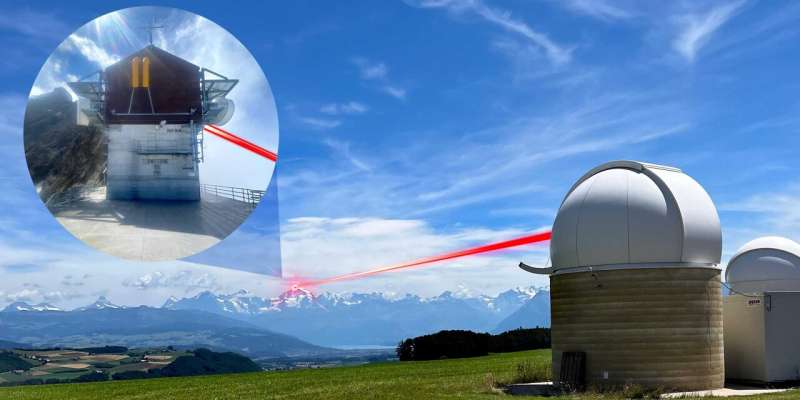Terabit optical data transmission through the air may eliminate the necessity of expensive deep-sea cables soon.

Optical data communication lasers showcase an impressive capability to transmit tens of terabits per second, even in substantial air turbulence. The backbone of the internet consists of a dense network of fibre-optic cables, each capable of transporting over 100 terabits of data per second. Deep sea networks connect continents, but they are costly.
ETH Zurich scientists and their European partners have showcased their ability to utilise lasers connecting the mountain summit of Jungfraujoch to the city of Bern in Switzerland. This breakthrough has the potential to render costly deep-sea cables obsolete soon.
Challenging conditions between the Jungfraujoch and Bern
The team achieved a milestone by testing a successful optical link between Jungfraujoch and Bern, transmitting high data over a 53 km distance. The laser beam encounters atmospheric obstacles near the ground, including turbulent air, Lake Thun, urban areas, and the Aare plane, affecting data transmission. Air shimmering caused by heat disrupts light movement, visible on hot days.
Satellite internet uses slow microwave transmission
Like Elon Musk’s Starlink, satellite internet connects the world using radio technologies. However, unlike the newer optical communication methods, these technologies operate in the less powerful microwave range with centimetre-sized wavelengths. Laser optical systems use shorter wavelengths for higher data capacity. A wide beam of light is aimed precisely at a receiver telescope of similar diameter to maintain a strong signal over a distance.
Turbulence cancels out modulated signals
The laser’s light wave is modulated to encode multiple states per symbol to maximise data rates. Different amplitudes and phase angles represent information symbols, allowing the transmission of more bits per oscillation. Air turbulence causes light waves to fluctuate speed, leading to amplitude and phase cancellation or addition at the receiving station’s detector, resulting in erroneous values.
Mirrors correct wave phase 1,500 times per second
The researchers used a MEMS chip with 97 adjustable mirrors to fix beam phase shift errors. The mirrors correct the shift 1,500 times per second, boosting signals by around 500x. This enhancement enabled a one terabit per second bandwidth over 53 kilometres. New light modulation formats demonstrated high data rates under adverse conditions. Information bits encoded in light wave properties achieve robust detection sensitivity.
Easily expandable to 40 terabits per second
A single wavelength achieved one terabit per second, scalable to 40 terabits with standard technologies. The scientists will continue advancing the modulation format to boost bandwidths in energy-limited data transmission methods.
Reference: Yannik Horst et al, Tbit/s line-rate satellite feeder links enabled by coherent modulation and full-adaptive optics, Light: Science & Applications (2023). DOI: 10.1038/s41377-023-01201-7






